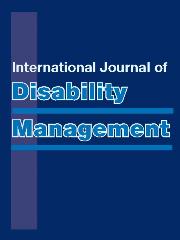No CrossRef data available.
Article contents
Visibility, Contact and Market-Competence: Keys to the Inclusion of People With Intellectual Disabilities in the Lebanese Workplace
Published online by Cambridge University Press: 05 October 2020
Abstract
People with intellectual disabilities (ID) experience high unemployment due to external (stigma, parental overprotection and low expectations) and internal (learned helplessness) barriers. Although Lebanon was a pioneer among Arab countries in its legislative and social activism toward inclusion of disabled people, stigma persists and a benevolence model of disability still prevails.
This article aims at identifying the needs of people with ID, and proposing directions for future work toward their inclusion in the Lebanese workplace, based on identified needs.
A literature search for articles on ID in Lebanon and national and regional reports on employment of people with ID over the past two decades was performed, excluding all documentation using unclear definitions of ID or focusing on mental illness.
Analysis of the literature highlighted the need for more familiarity and contact with, for more visibility of, and more market-competent training for people with ID in Lebanon.
Prejudice and faulty conceptions of ID can be reduced by increasing visibility of people with ID through increased everyday life contact opportunities. Change is urged at the level of organisational sheltered training to provide a more market-competent training for ensuring proper job placement of people with ID in mainstream labour.
Keywords
Information
- Type
- Article
- Information
- Copyright
- © The Author(s), 2020. Published by Cambridge University Press

